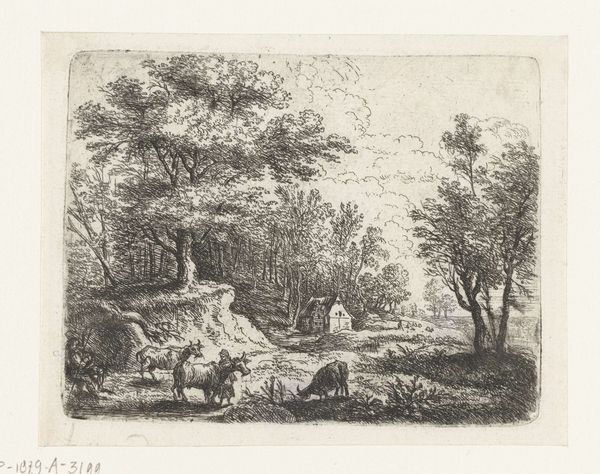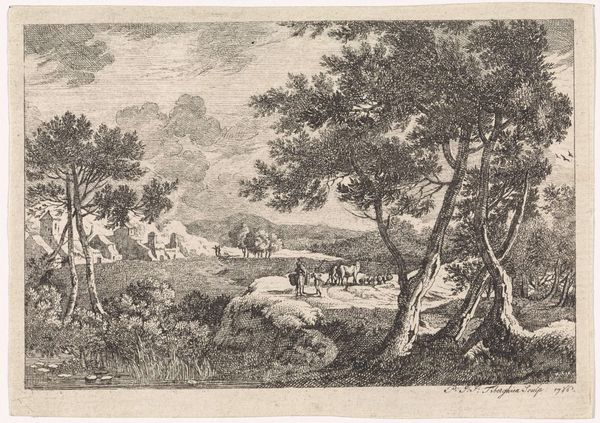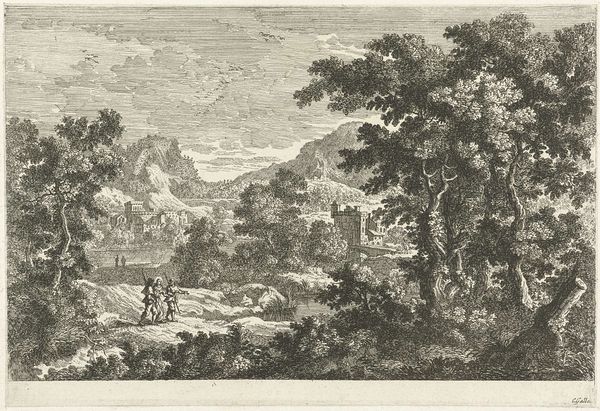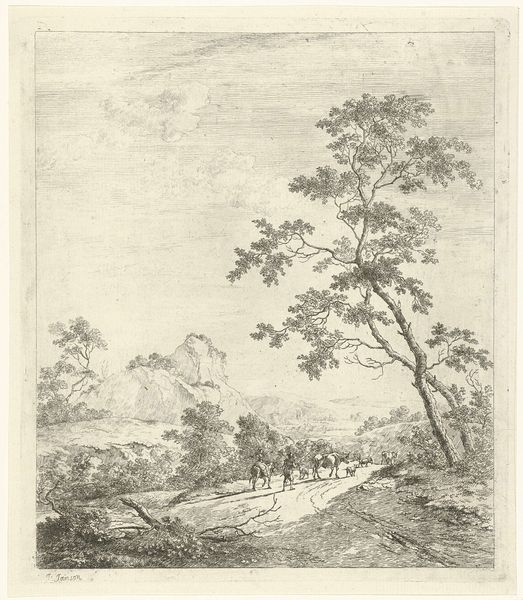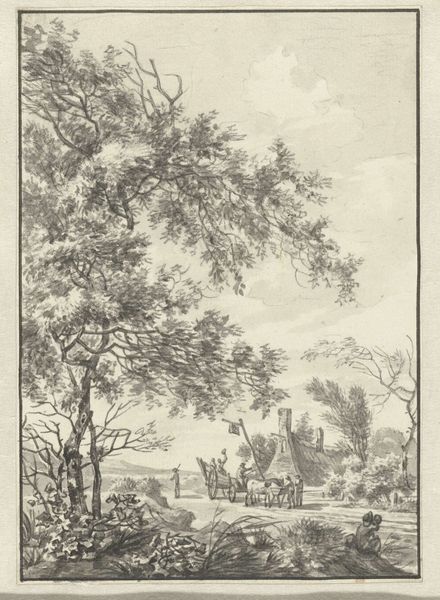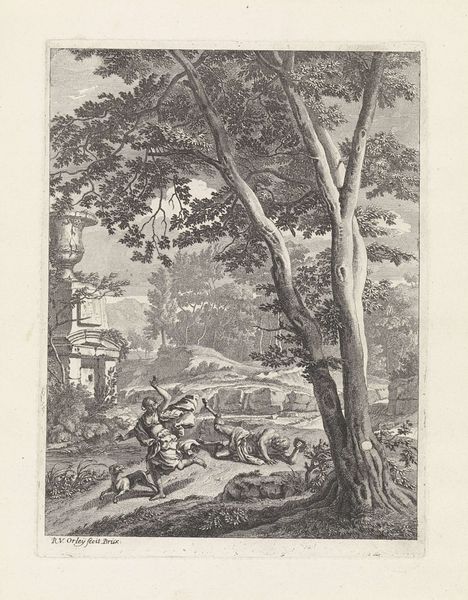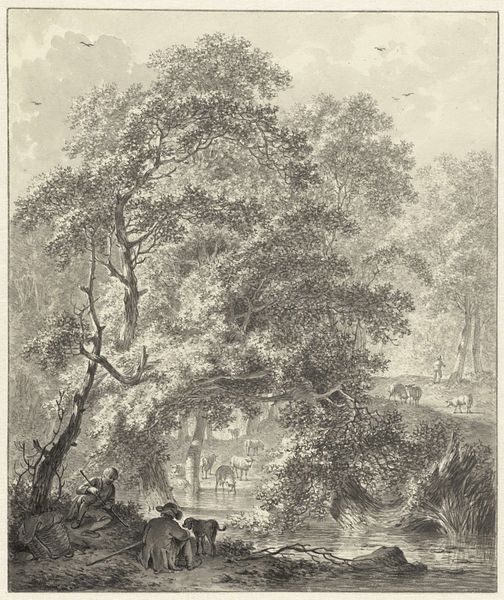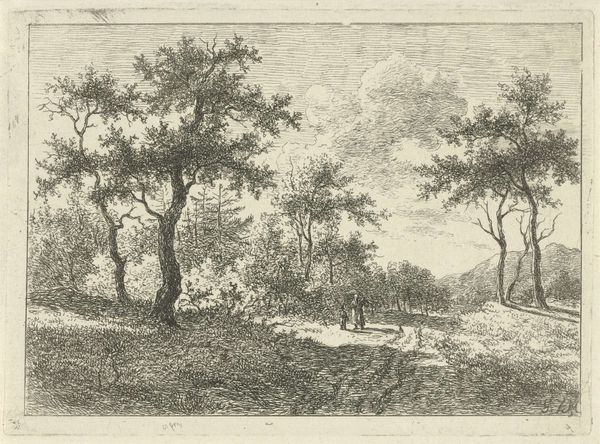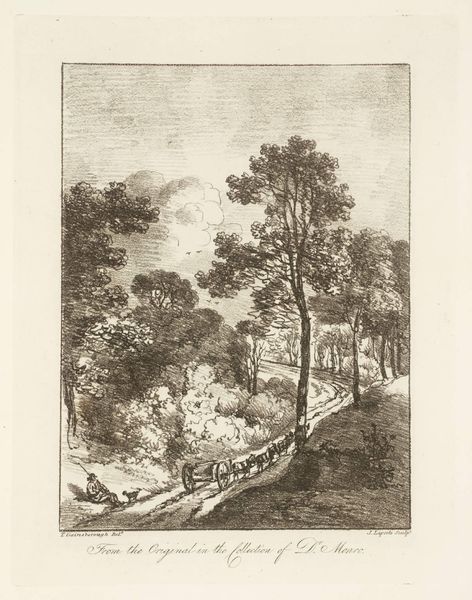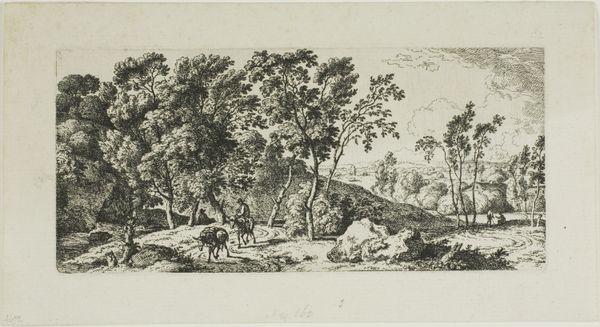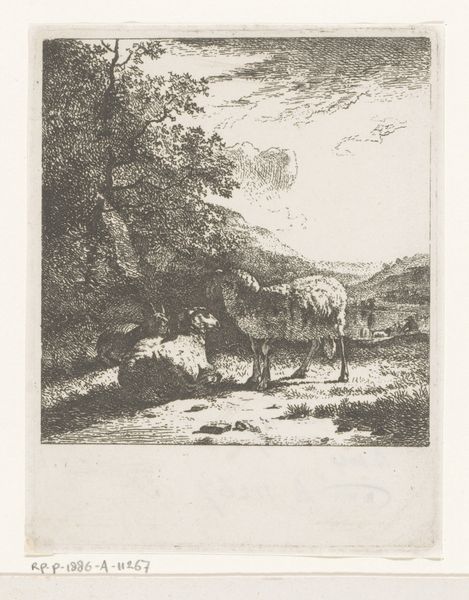
Dimensions: height 254 mm, width 212 mm
Copyright: Rijks Museum: Open Domain
Curator: Here we have "Landschap met herder en vee," or "Landscape with Shepherd and Cattle," created between 1761 and 1784 by Johannes Janson. Editor: My first impression is that this print evokes a sense of pastoral simplicity, a romanticized view of rural life through the detailed textures of the etching. It makes you wonder about the realities of pastoral labor at that time. Curator: Precisely! It invites us to consider how landscape, as a genre, historically functioned. Who are these figures traversing this space, and what implications arise from representing the Dutch countryside as harmonious? We must question whose labor, identity, and class are highlighted or omitted from these depictions. How does this reflect gendered ideas concerning pastoral life in the 18th century? Editor: Considering Janson’s use of etching, it seems worthwhile to contemplate how this print functioned within a larger network of production and consumption. The labor involved in the process—metalworking, acid etching, inking—highlights a physical and material reality often overlooked in discussions of high art. What type of ink did he have at hand to yield this particular saturation of the print? It encourages discussion of the artisanal and manufacturing conditions of 18th century printmaking. Curator: I concur, understanding the materiality is key, yet we should further scrutinize the ideological framework. While appreciating the texture created by etching, can we decode what sort of politics is reflected through this tranquil imagery? Editor: Well, perhaps this vision served as a respite for an increasingly urbanized population, even if far removed from the arduous material realities of working that land. But that tension-- between art as a product of labor, and art as an escape from labor— that friction is what I find most compelling here. Curator: Yes, I agree. Examining this work through the lens of both material production and critical social consciousness allows us to consider it beyond face value. Editor: And acknowledging the labor behind its production makes us think more about the landscape’s cultural impact, which might then transform how we appreciate landscapes overall.
Comments
No comments
Be the first to comment and join the conversation on the ultimate creative platform.
